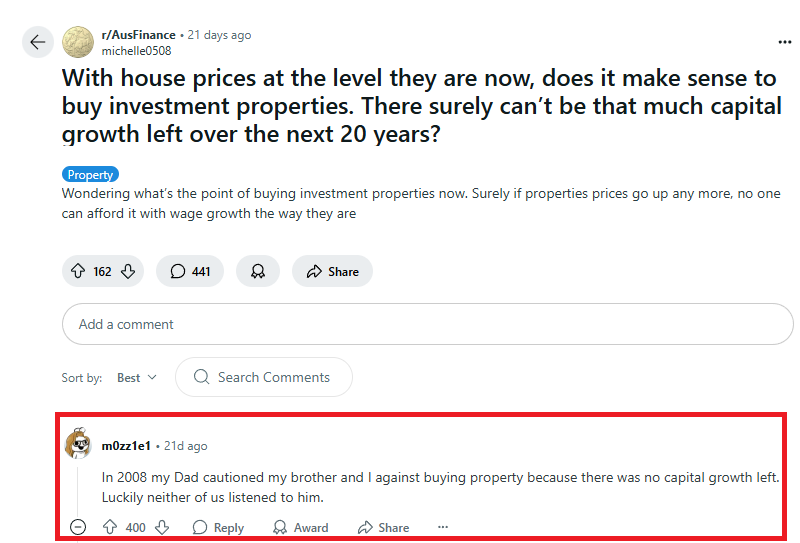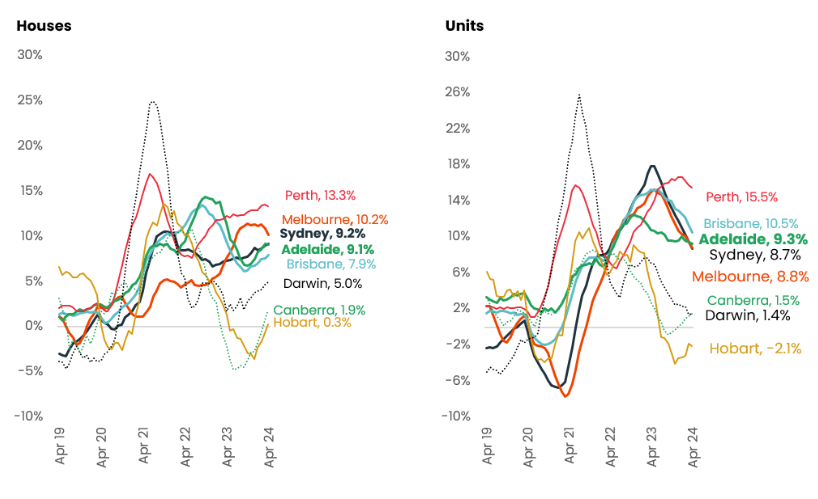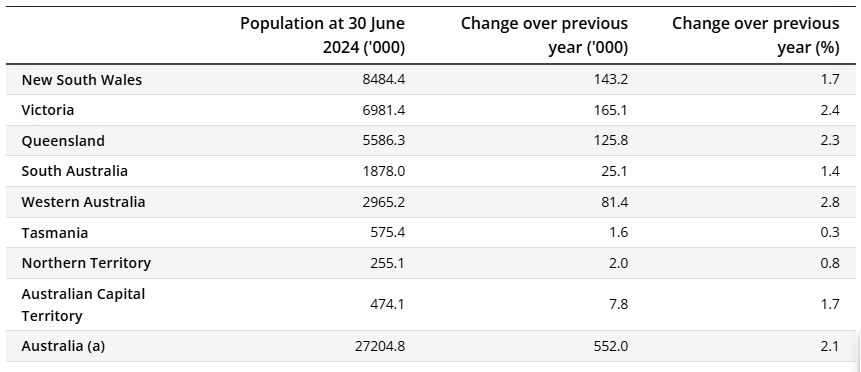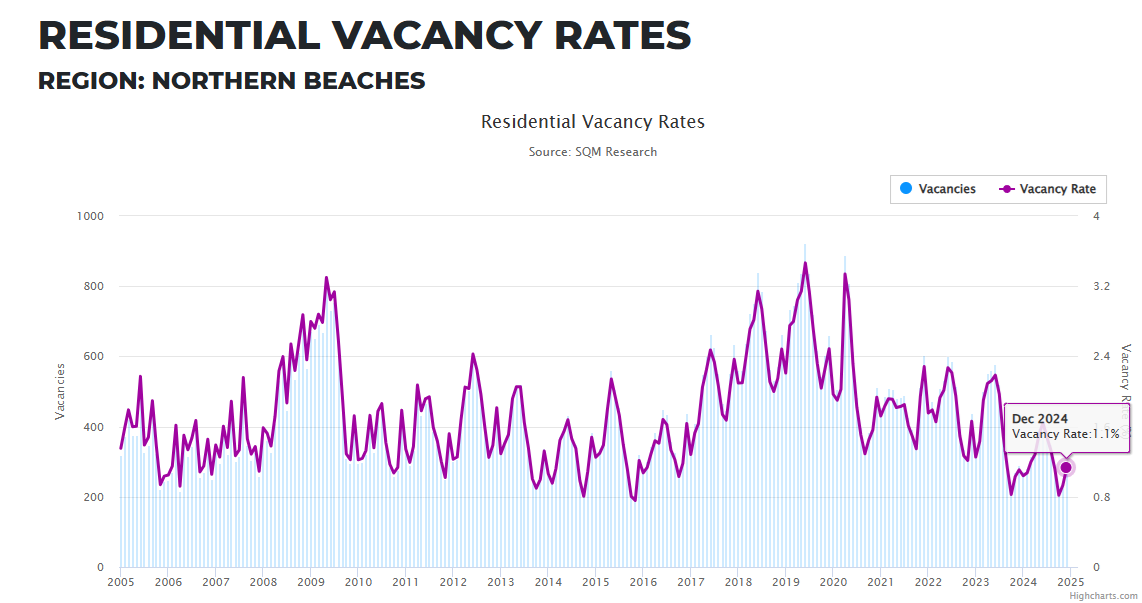6 signs a suburb's property values are about to soar
.jpg)
We all love beating the market - whether in stocks or property.
While there’s plenty of discussion about picking equities that outperform the index, real estate doesn’t always get the same level of attention. At Livewire, we want to change that.
The property game has completely transformed over the past decade. The days of easy money - driven by once-affordable prices, low interest rates, solid yields and a dash of speculation - are largely gone.
According to PropTrack, median capital city property values have now surpassed $865,000, while investment loan rates frequently sit above 6%. In this new reality, negative gearing has become the norm, replacing the old playbook where rental income easily covered mortgage repayments and often left investors with extra cash.
Simply buying and hoping for growth won’t cut it anymore. The path to generational wealth now demands a strategic approach - targeting high-growth suburbs where short-term losses are justified by long-term outperformance.
That’s exactly what we’ll explore in Part 1 of this mini-series - a roadmap to finding growth in Australian residential real estate.
To uncover what property investors should look for when identifying future hotspots, we spoke to some of Australia’s most respected experts:
- Nerida Conisbee, Chief Economist at Ray White, Australia’s largest real estate group
- Matthew Hughes, Managing Director of Capital Property Advisory, a buyer’s agency
- Chris Bates, Founder of alcove, a mortgage broker, and host of The Australian Property Podcast
4 reasons why property investment still wins
With rising rates, high stamp duty, and sustained cash flow losses, many investors are questioning whether real estate still makes sense. Meanwhile, the inevitable debate over whether prices have peaked is raging on Reddit. Here’s one post that caught our eye:

While users like “michelle0508” voice valid concerns about affordability, our experts align more closely with “m0zz1e1’s” perspective. Here’s why.
1. The power of leverage
One of the primary reasons property remains attractive is the ability to leverage. Unlike shares, property investors can borrow significantly more capital, amplifying potential returns without the risk of margin calls.

"If you have $100,000 and invest in shares, and those shares increase by 10%, you now have $110,000. But if you put that same $100,000 as a deposit on a $1 million property, and it rises by 10%, your gain is $100,000 - 10 times what you would have made with shares,” Conisbee explains.
2. Capital growth, income and inflation-protection
Not only have dwelling prices appreciated over the years, but the graph below highlights just how powerful landlords have been in shielding their income streams from the onslaught of rising rates and costs since 2022.

"Real estate is a tangible asset, and rents tend to rise with inflation, offering a reliable income stream. And despite short-term market fluctuations, Australian property has a proven track record of strong capital growth over the long term," says Hughes.
3. Quality properties will only become scarcer
As Mark Twain famously said, “Buy land, they’re not making it anymore.”
That scarcity is exactly why the quality properties we dream of: a home with a pool, a backyard, and a porch in a desirable suburb near good schools and cafés - on more scarce land - will continue to be bid up over time.
"In my opinion, significant property assets should be held long-term, as quality assets only become scarcer and more desirable. Plus, transaction costs like buying, selling, and tax are minimised," says Bates.
4. Negative gearing: Short-term pain, long-term gain
The reality is that Australia is one of the most landlord-friendly markets in the world, with a tax system designed to incentivise property investment.
"When you buy an investment property, you typically don’t make enough from rent to cover the mortgage. Negative gearing helps bridge that gap. Over time, as rents rise, the property becomes self-sustaining,” Conisbee says.
Investors benefit from generous tax breaks on property expenses, the ability to offset losses against taxable income, and a 50% capital gains tax (CGT) discount on assets held for over 12 months - making real estate a highly tax-effective asset class.
6 hallmarks of a suburb with booming property values
With the benefits outlined, all the experts agree that the key to success in this high-price environment is selecting properties in areas with solid growth fundamentals, and they offer tips on how to find those.
Much like in the stock market, investors shouldn’t simply chase past performance in suburbs that have already boomed, nor should they blindly buy the cheapest property in an unproven area, hoping it turns out to be a similar opportunity to a mispriced value stock.
"By prioritising quality over affordability, investors can mitigate risks and achieve long-term financial rewards. That said, there’s merit in buying in affordable markets - but investors must understand the risks of lower-socioeconomic or regional areas before going down that path," says Hughes.
Here are the key factors that can help investors identify suburbs with strong fundamentals.
1. Population growth and changing demographics
Strong population growth is one of the most reliable indicators of a suburb’s potential. When more people move into an area - whether for job opportunities, lifestyle appeal, or affordability - housing demand rises, pushing up both prices and rents.
"If you're in a city seeing strong population growth, that typically leads to better conditions. Last year, we saw this in places like Brisbane, Perth, the Sunshine Coast, and the Gold Coast — strong migration drove prices up,” Consibee says.
- Where to look: The Australian Bureau of Statistics website contains broad population data across the states and capitals, but it's important you also look at city and council planning documents for projections specific to the areas you're interested in.

But Hughes cautions that while headline population growth matters, investors need to dig deeper - examining demographic shifts and the potential for new land releases that could dilute demand.
“Suburbs near typical growth drivers like the CBD or the coast can be less affordable, so looking at other drivers, like employment hubs, well-regarded school catchment areas or universities and density of local amenities often attract young professionals and families, a demographic willing to pay a premium for convenience,” he says.
- Pro tip: Always assess the risk of additional local supply in conjunction with population growth or growth projections.
2. Infrastructure development: The growth catalyst
Infrastructure investment is a game-changer for property markets. Whether it’s a new highway, a railway extension, or a major commercial hub, new infrastructure improves connectivity, enhances amenities, and attracts both buyers and renters.
"Suburbs near planned train stations or highway upgrades often see strong interest as connectivity improves. Checking government infrastructure plans and council announcements can reveal upcoming hotspots before they take off," Hughes says.
- Example: Suburbs near planned train stations or highway upgrades often attract interest as connectivity improves.
- Where to look: Check government infrastructure plans, local council announcements, and websites like Infrastructure Australia or PlanningAlerts.
Here’s an example of the 2036 planning document from the rapidly-growing city of Blacktown in NSW.
This is the kind of report you’ll want to review when researching high-growth areas. Look for key statements like the one below, along with references to major infrastructure projects such as road upgrades, new transport links, and upcoming commercial hubs:
"Within 10 years, our population will exceed that of Tasmania, and our annual regional economic activity will surpass $26 billion."
3. Tight rental markets and low vacancy rates
A suburb with a low vacancy rate and high rental demand is a strong indicator of investment potential. When rental supply is scarce, landlords gain pricing power, and rental yields strengthen over time.
"Coastal and lifestyle suburbs, which surged during COVID-19, continue to experience tight rental markets. Data sources like CoreLogic and SQM Research help identify suburbs with persistently low vacancy rates, a sign of strong demand," Hughes says.
Where to look: Use tools like CoreLogic, SQM Research or REA and Domain’s rental vacancy rate data to identify suburbs with low vacancy rates. But be mindful these figures can differ, and Hughes’ team also look at other data sources for reassurance, or to identify potential discrepancies that could highlight a fault in how the data is collated.
- Pro tip: A vacancy rate of 2% or below indicates a tight rental market, which is generally favourable for landlords—often leading to stronger rental growth. Here’s an example of SQM’s data on the NSW Northern Beaches, using their vacancy rate tool.

4. Seek economic diversification
Even in a booming economy, some suburbs struggle, and few illustrate this better than Gladstone, QLD. During the early 2010s LNG boom, investors flooded into the property market, only to see prices collapse when energy prices ran out of gas.
The bubble popped, creating horror stories those of the poor bugger below.

Suburbs heavily reliant on a single industry - such as mining towns - are prone to volatility, whereas those with diverse employment drivers tend to hold their value and appreciate more steadily.
"Target regions with multiple industries - education, health, technology, and retail/hospitality - rather than areas that depend on a single economic sector," Hughes says.Pro tips:
- Make multiple trips around the area, scouting for signs of economic diversification. Look into how busy the industrial hubs, healthcare facilities and shopping malls are. Identify new construction and dig into research to verify how affluent the area is becoming.
- Beyond that, review city planning documents to see what’s in the pipeline - whether it's an Amazon warehouse, a new Costco, or an entertainment precinct - as these developments can signal long-term growth potential and more diversification.
5. Gentrification and lifestyle appeal
Gentrification - the process of older, underdeveloped areas evolving into desirable neighbourhoods - has been a consistent driver of property growth. Younger generations moving in, renovating homes, and attracting new businesses can transform a suburb’s desirability and property values.
"In Melbourne, we saw this in Northcote and Thornbury. Now, it's moving west to Footscray and Sunshine,” Conisbee says.
Beyond gentrification, lifestyle factors play a significant role in property demand. Australians have a strong preference for living near water - whether it’s the beach, a river, or even a lake.
"Over the past 10 to 20 years, the top growth suburbs have been close to water. Gold Coast has been an incredibly strong performer for this reason,” she says.
6. Identify ‘forever suburbs’
Many of us have dreamt about living in certain suburbs - those with a unique "X-factor" that sets them apart. It could be the vibrant culture, access to top schools, proximity to the CBD, café-lined streets, or a strong community feel.
.jpg)
Some suburbs have an inherent desirability that keeps demand high, particularly among high-income earners. These “forever suburbs” are where wealthier families aspire to settle, leading to low turnover and strong long-term price appreciation.
"The key to outperforming in the long run is buying higher-quality land in the more desirable parts of forever suburbs. These locations have lower turnover rates, and as wealth in a city grows, more buyers compete for the best land, leading to faster appreciation,” Bates says.
what do you look for in growth suburbs?
Are you a property investor? Tell us what's at the top of your list when you analyse a suburb to buy real estate in.
Be sure to check out Part 2 of this series, where our experts tip the top 17 suburbs and regions of Australia poised for strong performance.
3 topics

